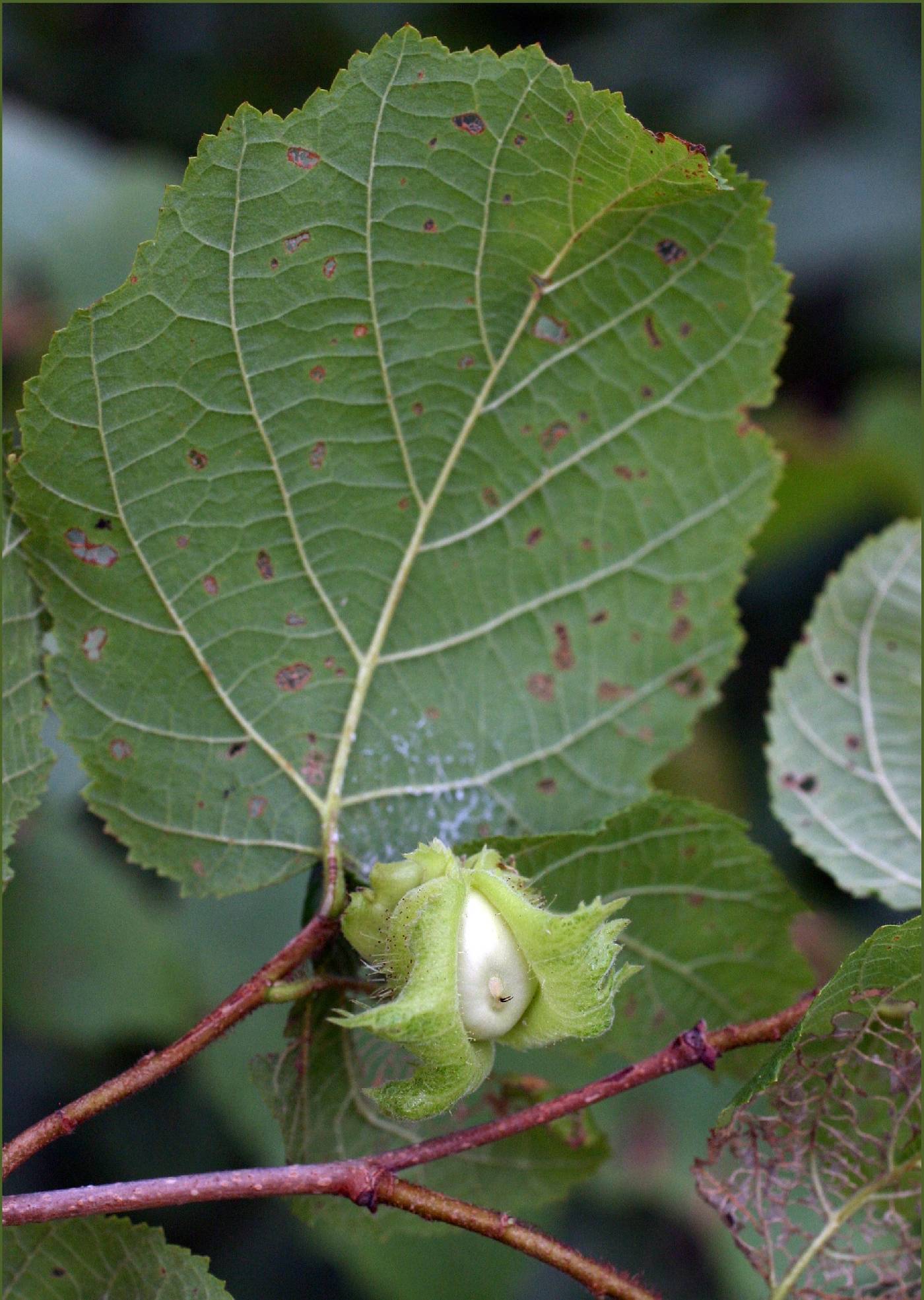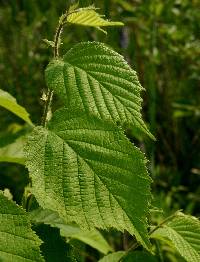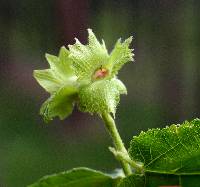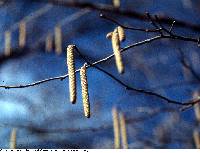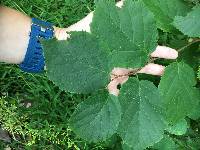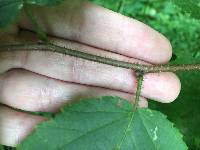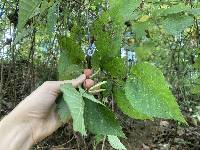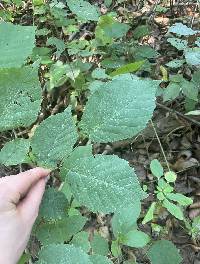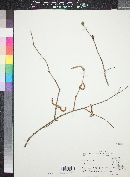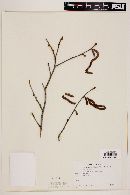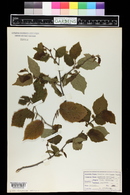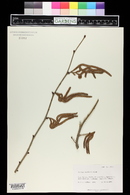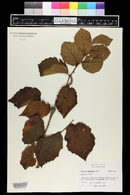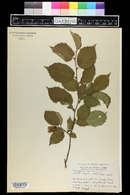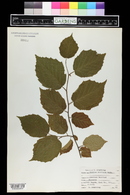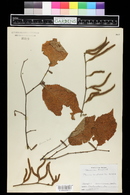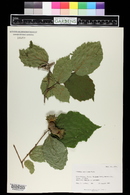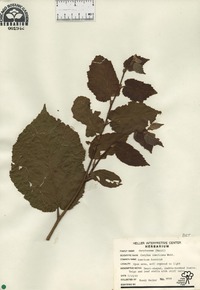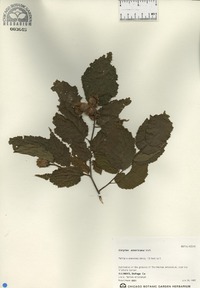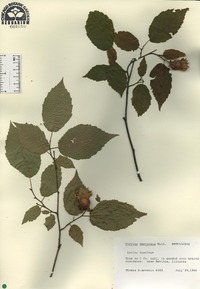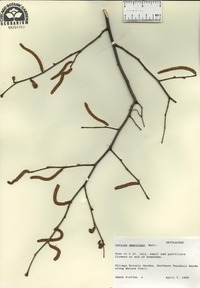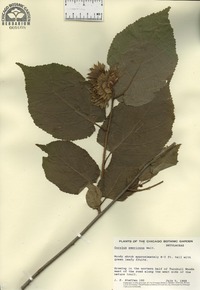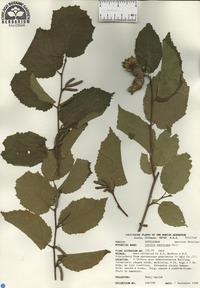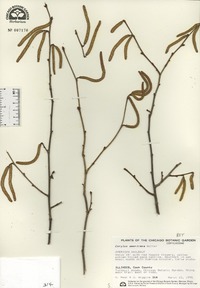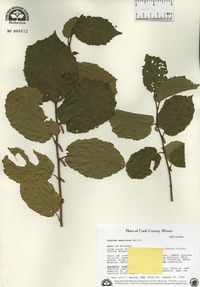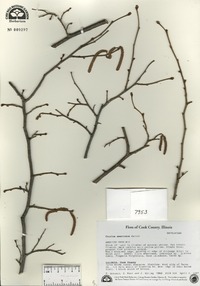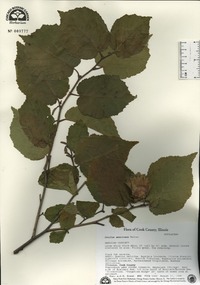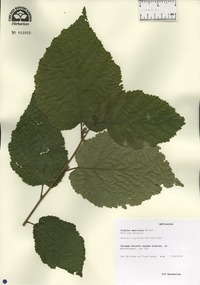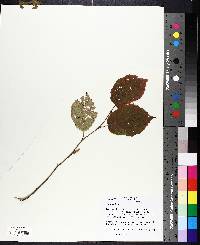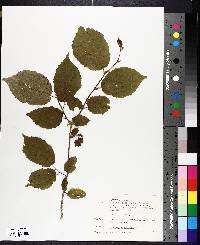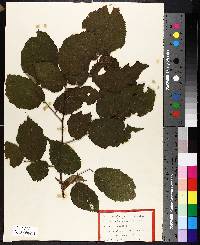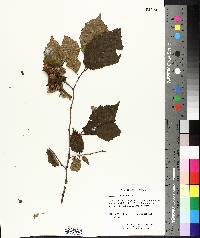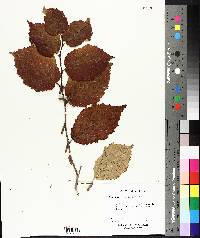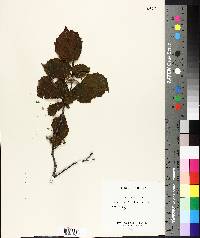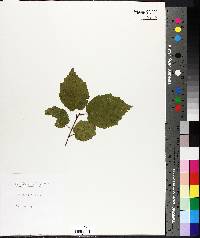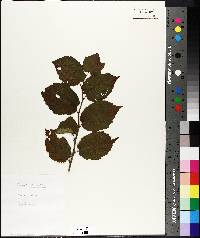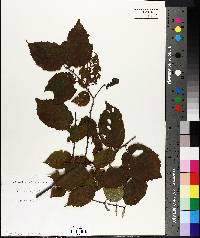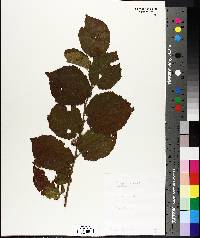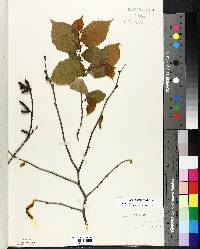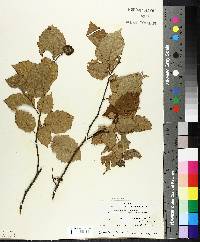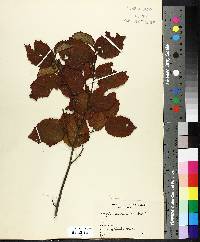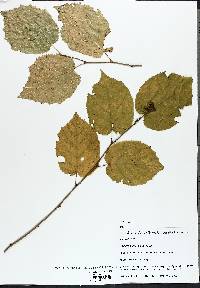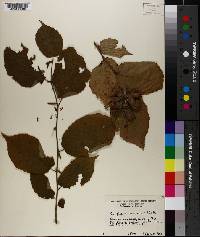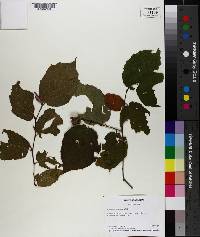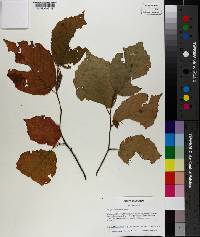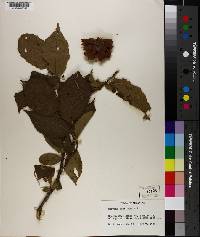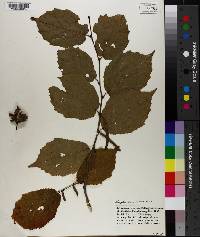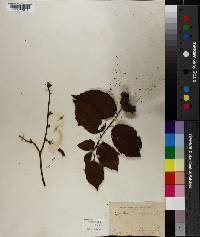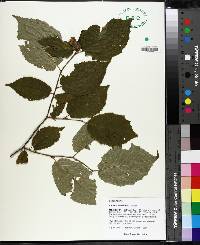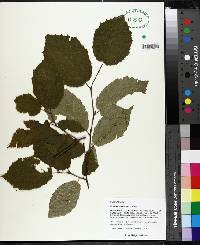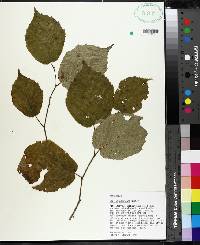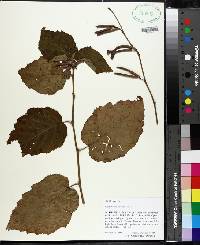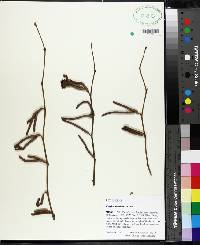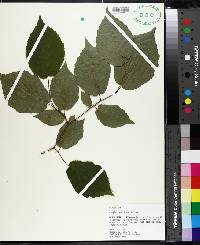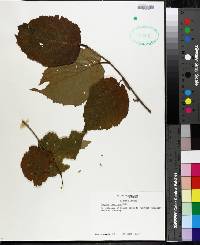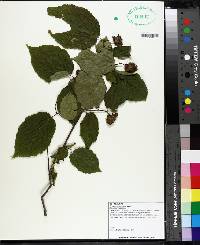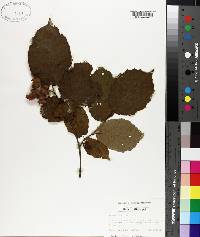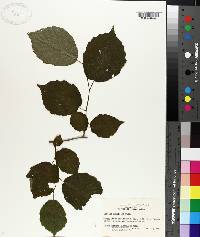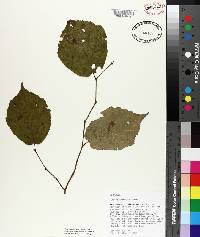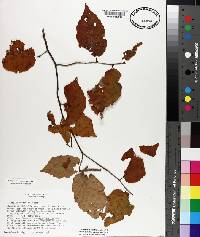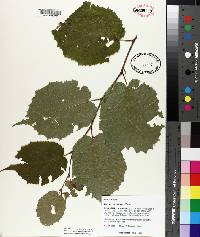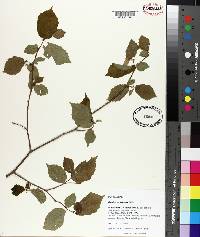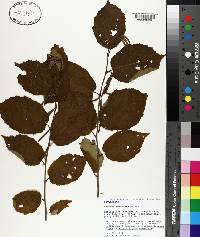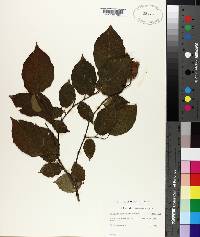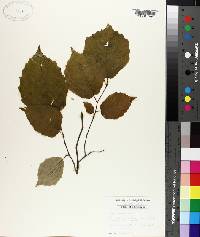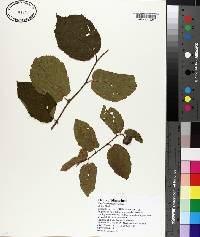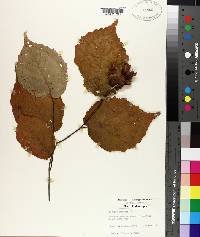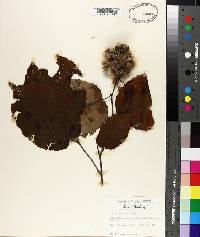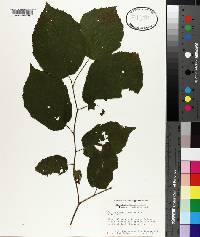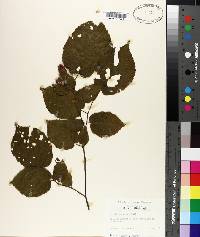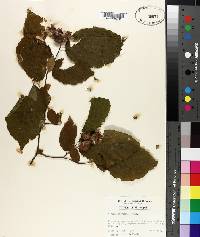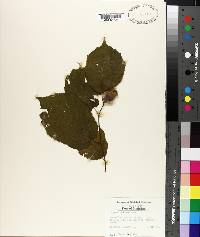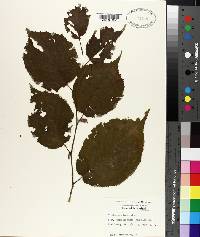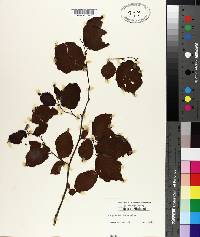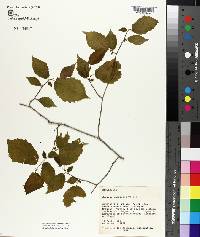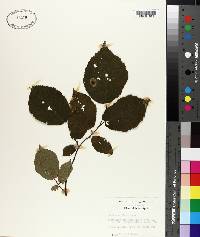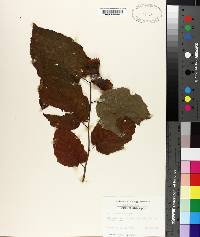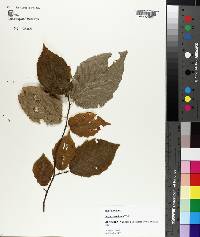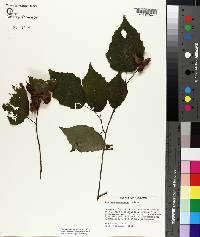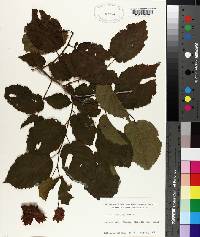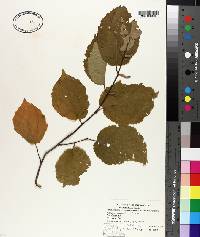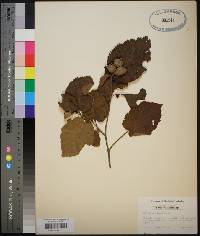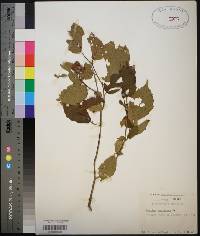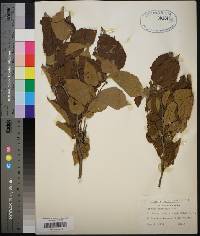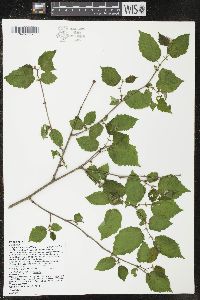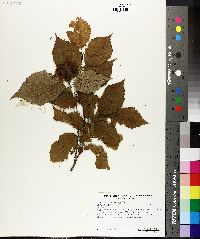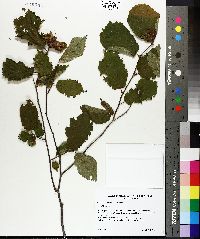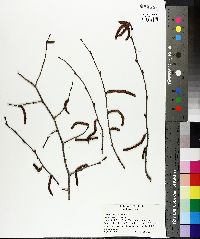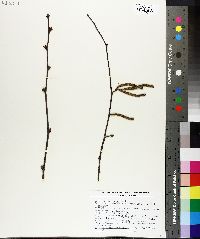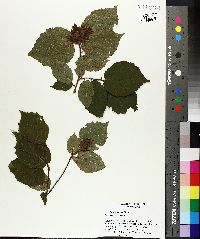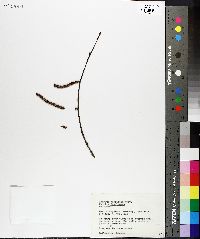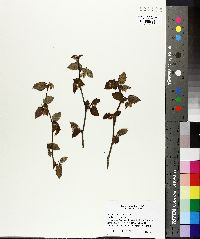Corylus americana
|
|
|
|
Family: Betulaceae
American Hazelnut
[Corylus americana f. missouriensis (A.DC.) Fernald] |
Shrubs , open, upright, rounded, to 3(--5) m. Bark light gray, smooth. Branches ascending; twigs pubescent, covered with bristly glandular hairs. Winter buds containing inflorescences broadly ovoid, 3--4 × 3--4 mm, apex obtuse to rounded. Leaves: petiole pubescent, densely glandular-bristly. Leaf blade broadly ovate, often with straight sides and slight lobes near apex, giving them squarish appearance, 5--16 × 4--12 cm, moderately thin, base narrowly cordate to narrowly rounded, margins sharply serrate or obscurely doubly serrate, apex abruptly to long-acuminate; surfaces abaxially sparsely to moderately pubescent, velutinous to tomentose along major veins and in vein axils. Inflorescences: staminate catkins lateral along branchlets on very short shoots, usually in clusters of 1--2, 4--8 × 0.5--0.8 cm; peduncles mostly 1--5 mm. Nuts in clusters of 2--5, sometimes partially visible; bracts much enlarged, leaflike, distinct nearly to base, slightly longer than to 2 times length of nuts, apex deeply and irregularly laciniate; bract surfaces downy-pubescent, abaxially stipitate-glandular. 2 n = 22, 28. Flowering very early spring. Moist to dry open woods and thickets, hillsides, roadsides, fencerows, and waste places; 0--750 m; Man., Ont., Sask.; Ala., Ark., Conn., Del., D.C., Ga., Ill., Ind., Iowa, Kans., La., Ky., Maine, Md., Mass., Mich., Minn., Miss., Mo., Nebr., N.H., N.J., N.Y., N.C., N.Dak., Ohio, Okla., Pa., R.I., S.C., S.Dak., Tenn., Vt., Va., W.Va., Wis. Corylus americana is a weedy species, sometimes considered a pest in carefully managed forests. The nuts are smaller but of the same general quality and flavor as commercial filberts ( Corylus maxima Miller and C . colurna Linnaeus). Native Americans used Corylus americana medicinally for hives, biliousness, diarrhea, cramps, hay fever, childbirth, hemorrhages, prenatal strength, and teething, to induce vomiting, and to heal cuts (D. E. Moerman 1986).
Shrub to 3 m tall Leaves: alternate, stalked, dark green, 5 - 16 cm long, 4 - 12 cm wide, broadly egg-shaped with a narrow heart-shaped to rounded base and a pointed tip, sharply toothed, somewhat hairy beneath (especially along veins). Flowers: either male or female, borne on the same tree (monoecious). Male flowers are yellowish brown catkins 4- 8 cm long borne solitary or in pairs. Female flowers are red and tiny. Fruit: a nut enclosed by two bracts, borne in clusters of two to five. Bracts are green changing to brown, about twice the size of the nut, and resemble lettuce leaves. Twigs: light gray, covered with reddish glandular hairs. Buds: greenish brown to purple, 3 - 4 mm long and wide, broadly egg-shaped to spherical. Form: round-topped with an open base, branching near the top. Similar species: Corylus cornuta has non-glandular, hairy twigs, and the bracts surrounding the nut are fused into a tubular, beak-like structure. Flowering: early March to late April Habitat and ecology: This plant suckers from the roots, spreading in dry woods and savannas and along fencerows in rural areas. Occurence in the Chicago region: native Notes: The hazelnuts of this species are smaller than commercial hazelnuts, and are quickly eaten by squirrels and other wildlife when ripe. Commercially produced hazelnuts (or filberts) come from Corylus maxima and Corylus colurna. Etymology: Corylus is the Greek name for hazel. Americana means "from the Americas." Author: The Morton Arboretum Shrub 1-3 m, the young twigs and petioles ±pubescent (hairs red when young) and normally with stout, stipitate glands; lvs broadly ovate to obovate, finely doubly serrate, broadly rounded to cordate at base, paler and ±pubescent beneath; staminate catkins on short woody peduncles or branchlets; mature involucre pubescent but not bristly, 1.5-3 cm, the broad, laciniate bracts commonly separate above the nut, at least on one side; nut compressed, 1-1.5 cm, usually wider than long; 2n=22. Dry or moist woods and thickets; Me. to Sask., s. to Ga., La., and Okla. Gleason, Henry A. & Cronquist, Arthur J. 1991. Manual of vascular plants of northeastern United States and adjacent Canada. lxxv + 910 pp. ©The New York Botanical Garden. All rights reserved. Used by permission. From Flora of Indiana (1940) by Charles C. Deam Infrequent to frequent throughout the state. It adapts itself to both moist and dry soils but reaches its greatest size in the moist, black loam soils of the northern part of the state. |
|
|
|

